Scientific Name
Dudleya blochmaniae (Eastw.) Moran ssp. blochmaniae
Family
Crassulaceae
General
A rare species with three subspecies. The subspecies native to habitats around CI is found on rocky, north facing slopes, sometimes in great local abundance.
CI
This tiny succulent is one of the treasures of the wild areas of CI. The subspecies found at CSUCI is D. blochmaniae blochmaniae, still rare, but the most wide-spread of the three subspecies. In the proper habitat around CSUCI, it is thriving, in fact, can be locally abundant. The tiny white flowers of one patch above University Glen from a distance look like a thin dusting of snow (in June!). It grows from rocky soils, and from any crack or pit in a rock face that is large enough to catch a little soil. It is often associated with pads of moss or patches of Selaginella growing from rock faces.
Tiny plants appear shortly after the first rain in October or November. Flowering is relatively late, May-June.
While not officially protected by state or federal statute, this species is rare and special. Care must be taken to avoid damaging it habitat. Fortunately around CI, all of this habitat occurs in relatively inaccessible, or at least seldom trod, hillside areas.
References
More on this species at CalFlora.
The Jepson Manual(2012: 689, Dudleya by Stephen Ward McCabe).
McAuley (1996: 318).
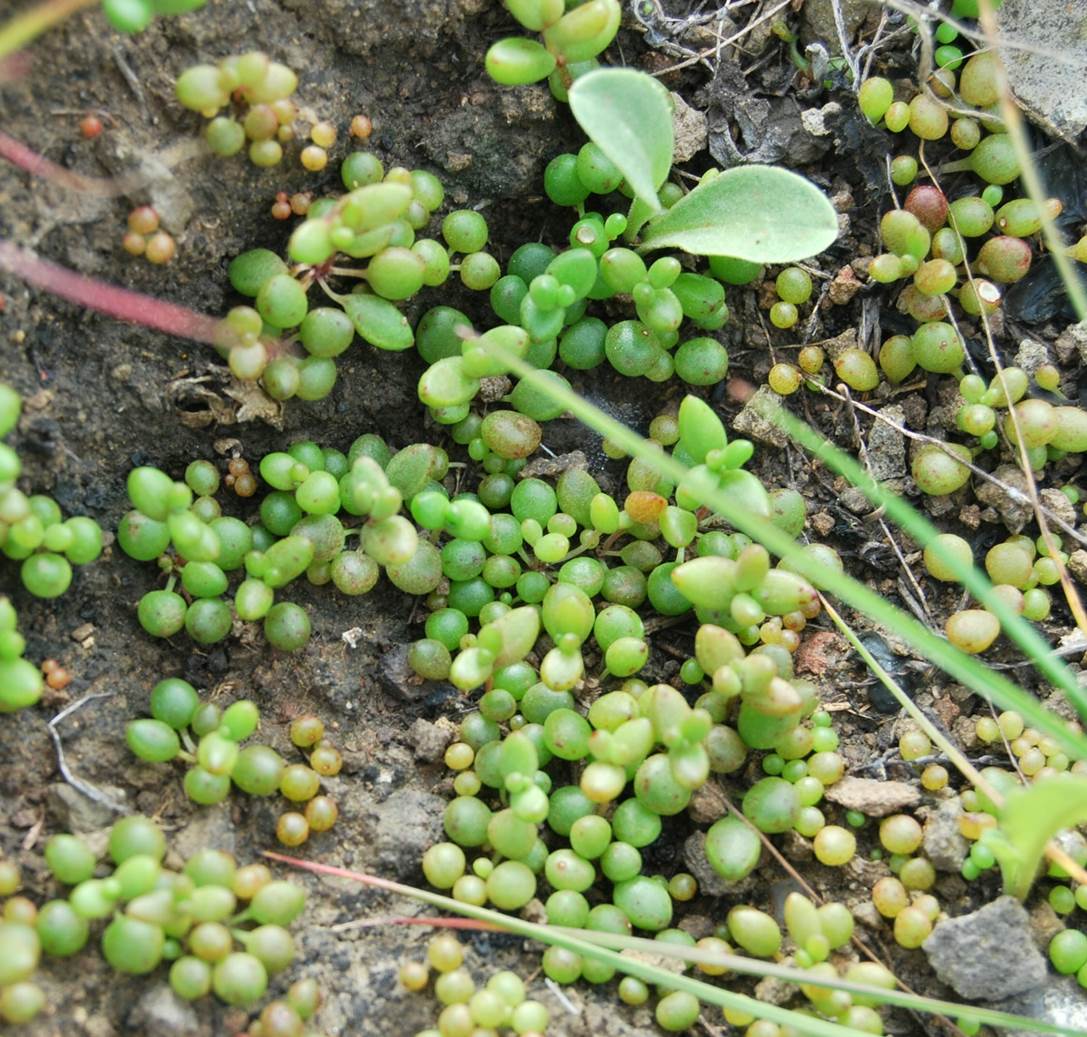
Very young Dudleya blochmaniae hillside to the south of University Glen, just opposite of tot-lot, CI. The pair of oval leaves toward the top of the photograph belong to a young Dodecatheon clevelandii (29 February 2008).
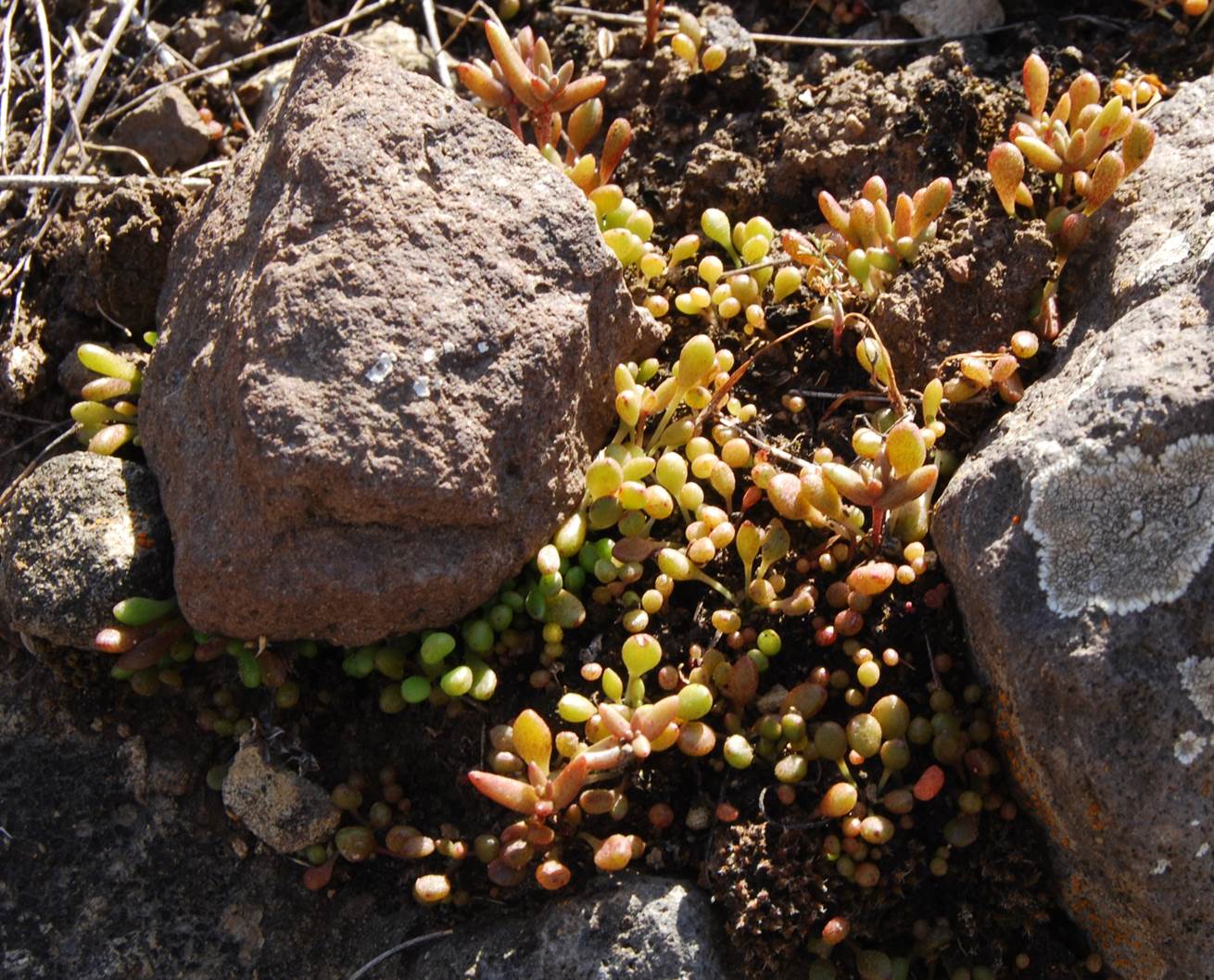
Young Dudleya blochmaniae on hillside opposite (south) of airfield at Camarillo Park, CI (21 February 2013).

Dudleya blochmaniae on hillside to south of Malibu Hall and the Town Center, CI (7 February 2013).
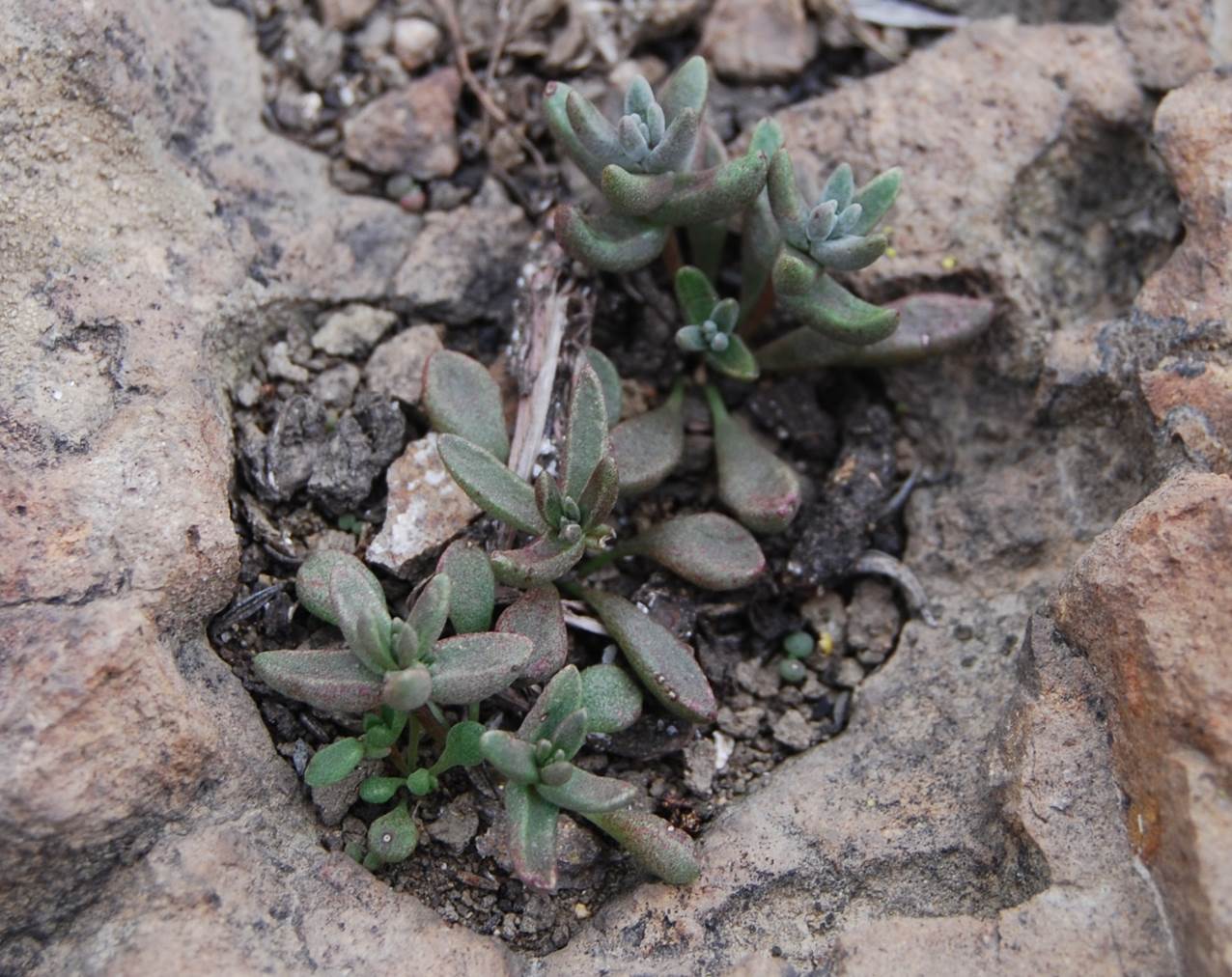
Dudleya blochmaniae on hillside to south of Malibu Hall and the Town Center, CI. These young plants are in very typical habitat for this species, rooted in crevices or pits in the rock face of the hill (7 February 2013).

Dudleya blochmaniae on hillside to south of Malibu Hall and the Town Center, CI. Note the owl pellet that has landed on this small patch of young plants (7 February 2013).

Dudleya blochmaniae in a sheltered spot on the hillside above the Camarillo Park entrance area, CI (5 February 2013).
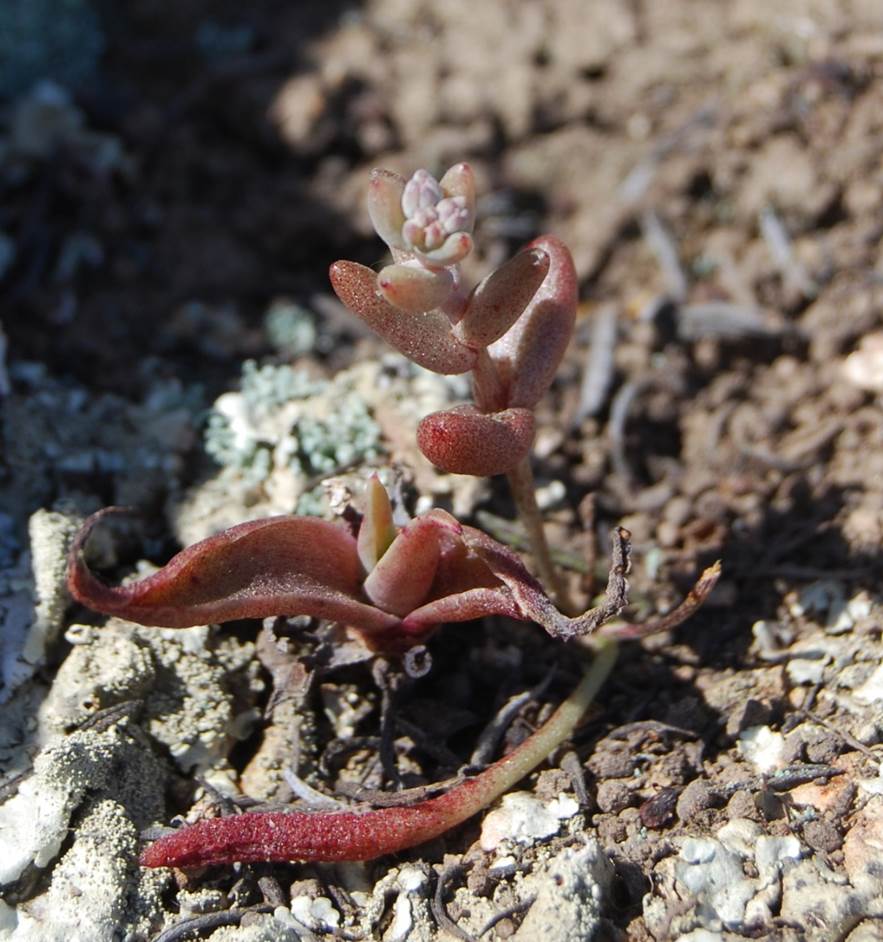
Dudleya blochmaniae, as the plants mature and the soil dries, the plants turn from green to red, on hillside above Camarillo Park Entrance, CI (11 April 2013).
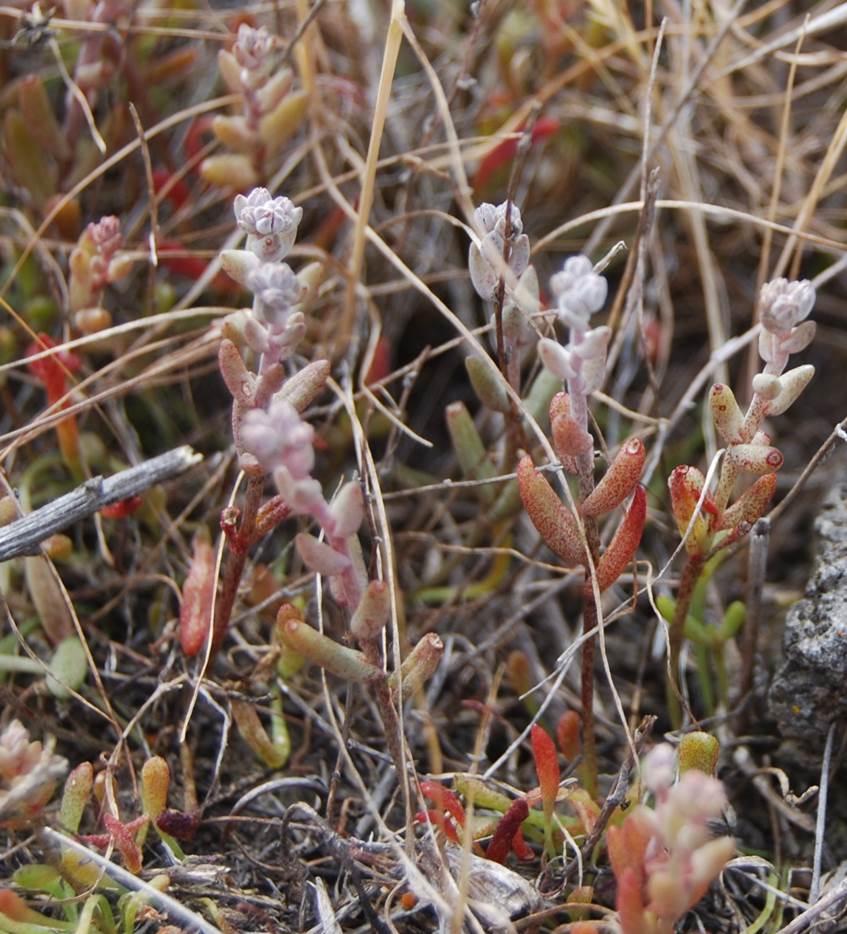
Dudleya blochmaniae, on hillside to the south of Malibu Hall and University Glen, CI. These are maturing, reddish and erect plants, soon to be forming flower buds at the their tips (15 April 2013).
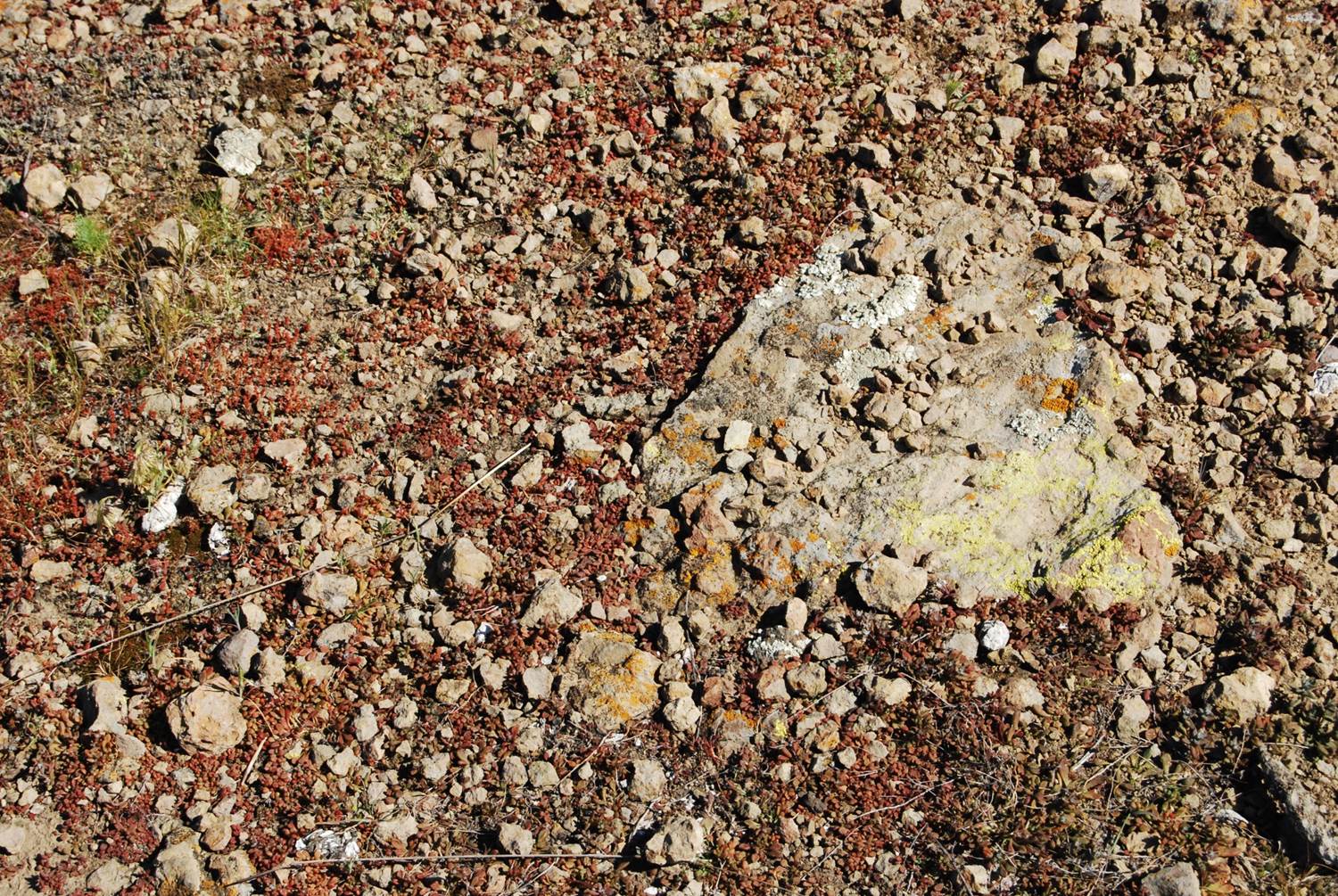
Dudleya blochmaniae, a dense patch of young plants, showing the red color typical of plants that are drying out, on the hillside to the south of University Glen, CI (28 February 2013).
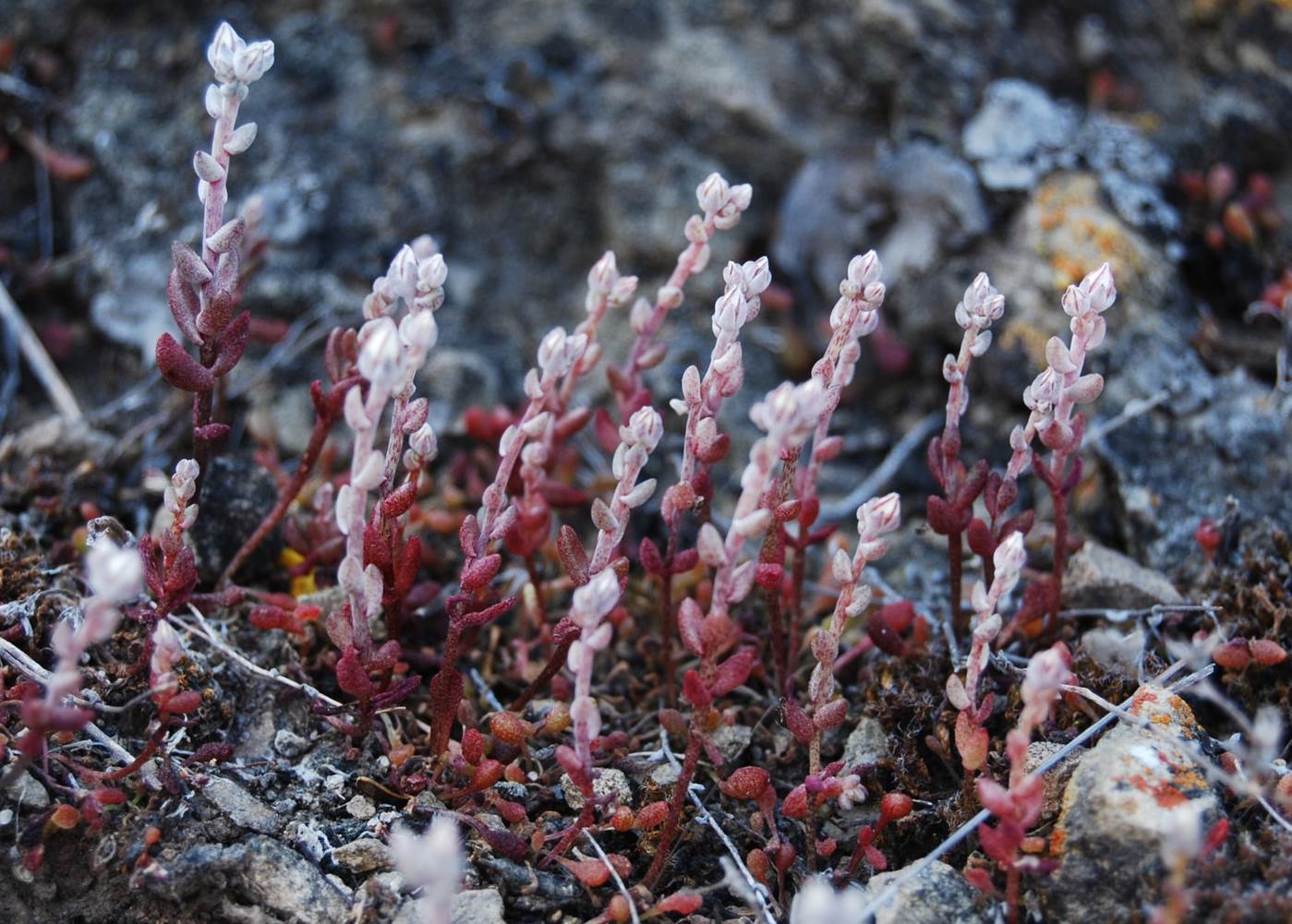
Dudleya blochmaniae, flower buds starting to appear, on hillside to the south of Malibu Hall and University Glen, CI (22 April 2013).
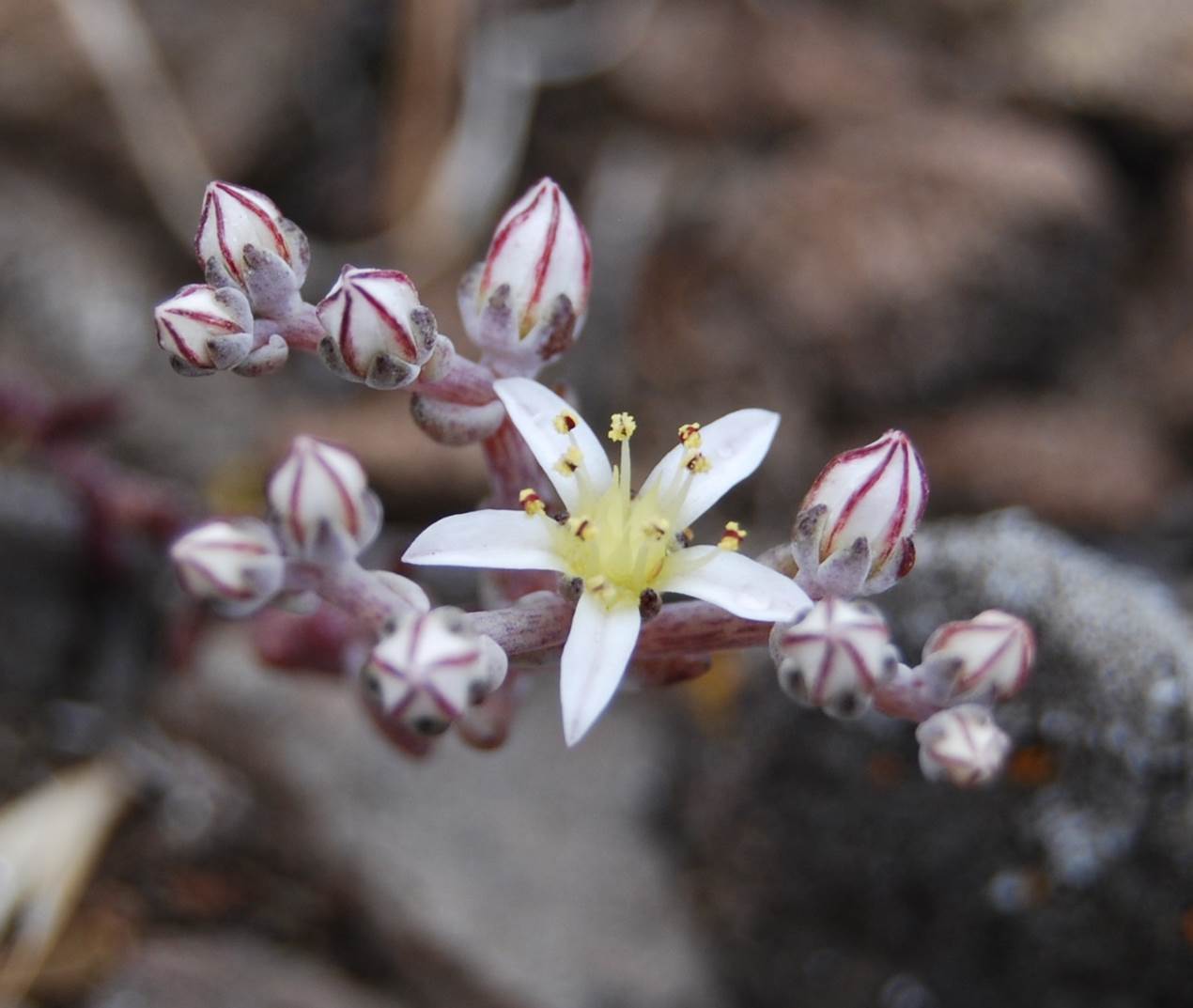
Dudleya blochmaniae, a flower and the distinctively banded flower buds, on hillside to the south of Malibu Hall and University Glen, CI. One of the very first flowers of this species observed in the 2013 season (22 April 2013).

Dudleya blochmaniae, a flower and the distinctively banded flower buds, on hillside to the south of Malibu Hall and University Glen, CI. Growing from a small depression in a rock (22 April 2013).
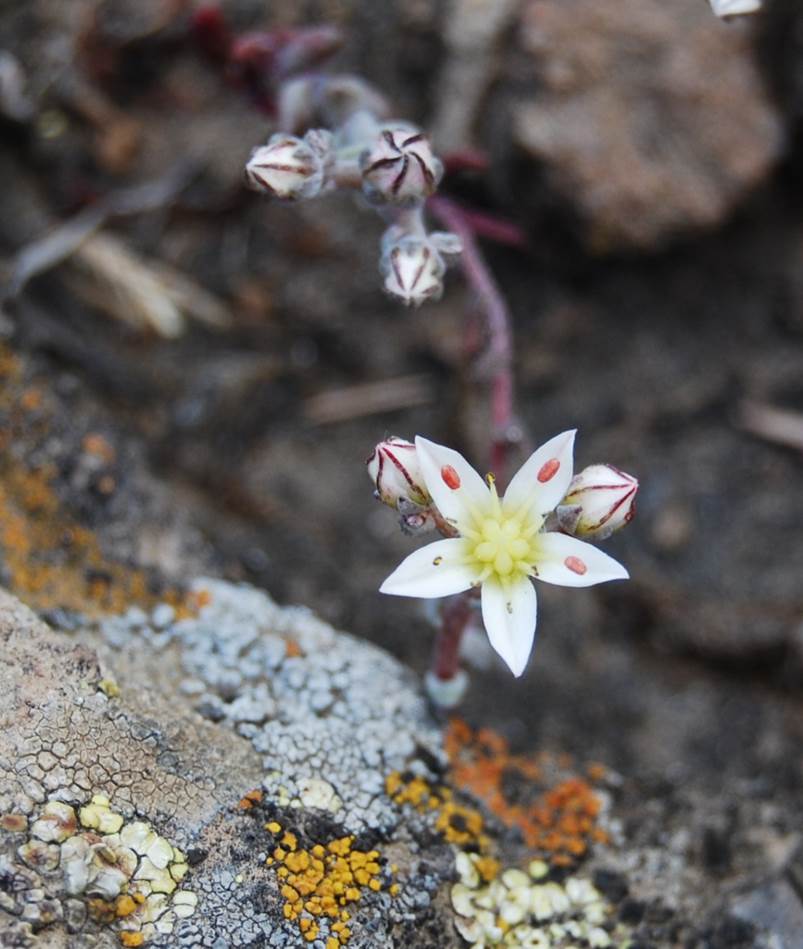
Dudleya blochmaniae, note the distinctive red anthers, on hillside to the south of Malibu Hall and University Glen, CI. (22 April 2013).
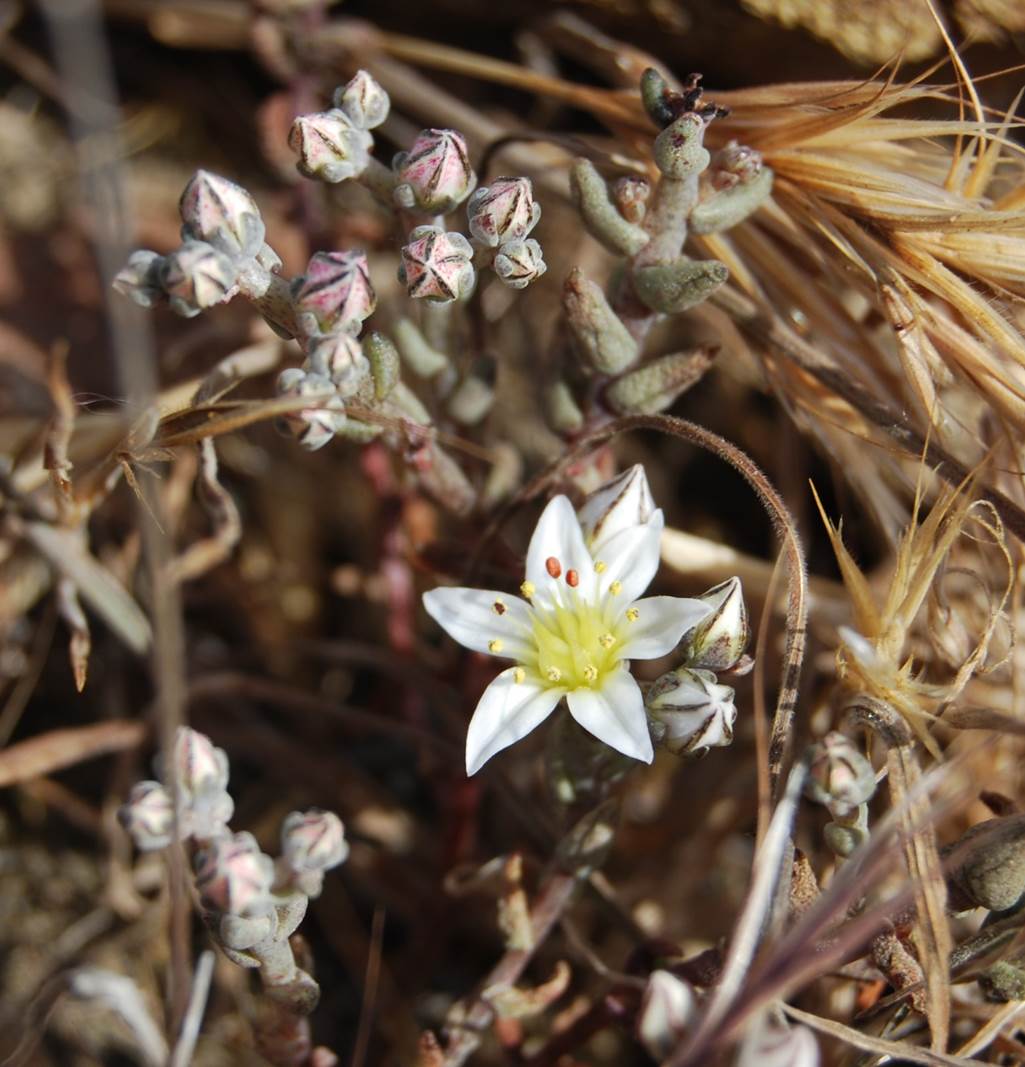
Dudleya blochmaniae, note the distinctive red anthers, on hillside to the south of Malibu Hall and University Glen, CI. (22 April 2013).
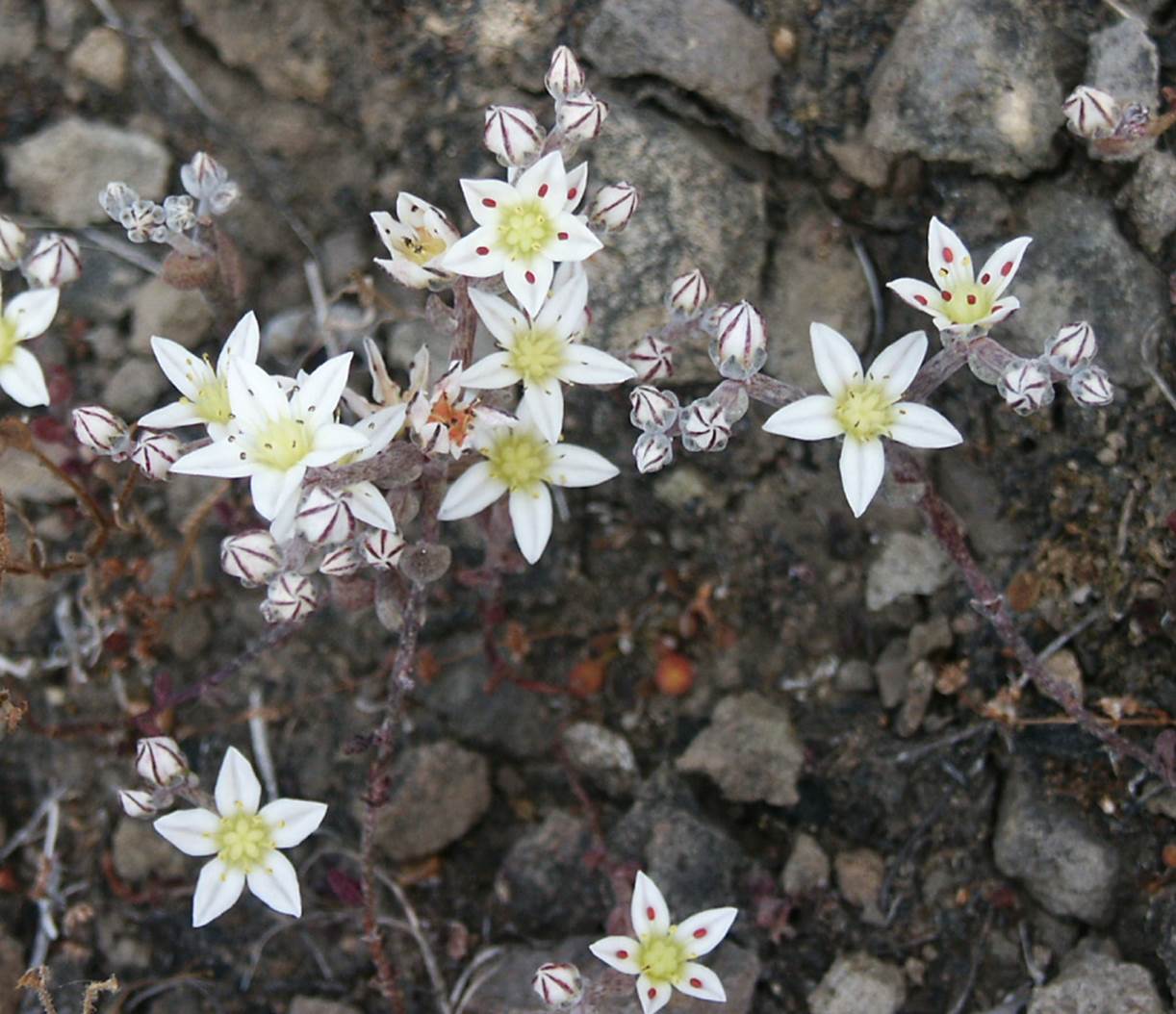
Dudleya blochmaniae on hillside to the south of Malibu Hall and University Glen, CI. (30 May 2003).
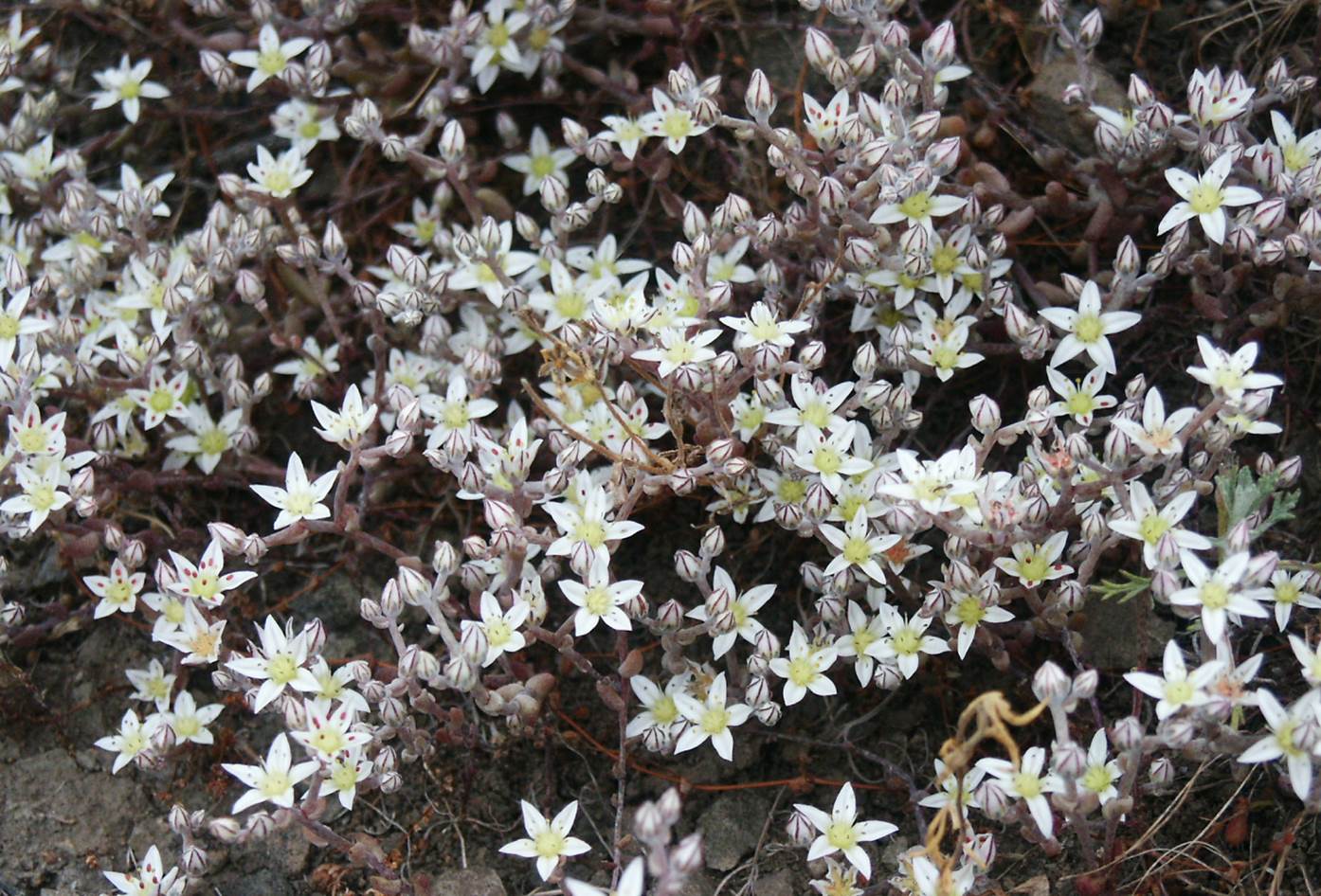
Dudleya blochmaniae on hillside to the south of University Glen, CI. Dense patches such as this are common during wetter years, and not typical of dry years (24 May 2005).
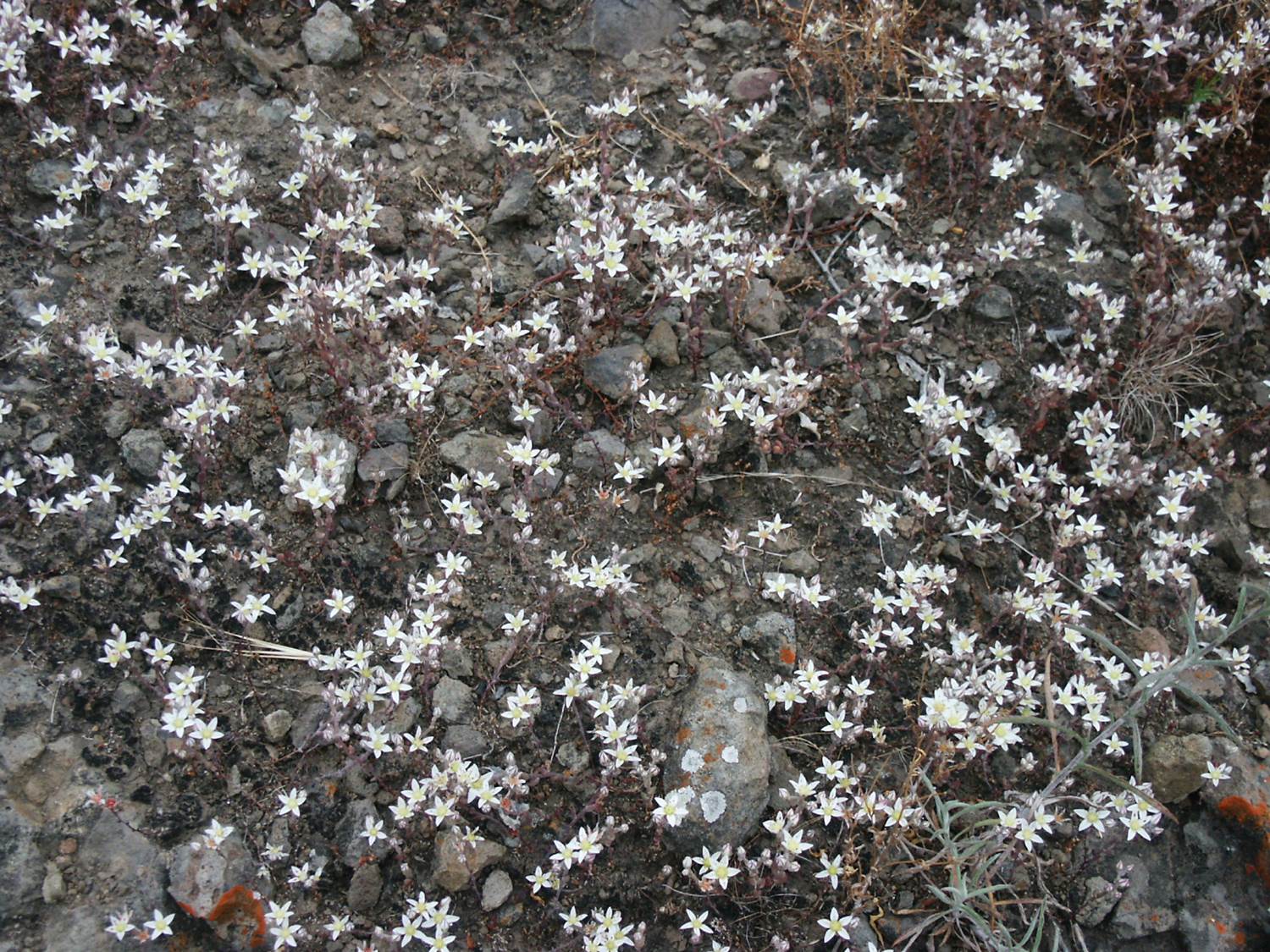
Dudleya blochmaniae on hillside to the south of University Glen, CI (24 May 2005).
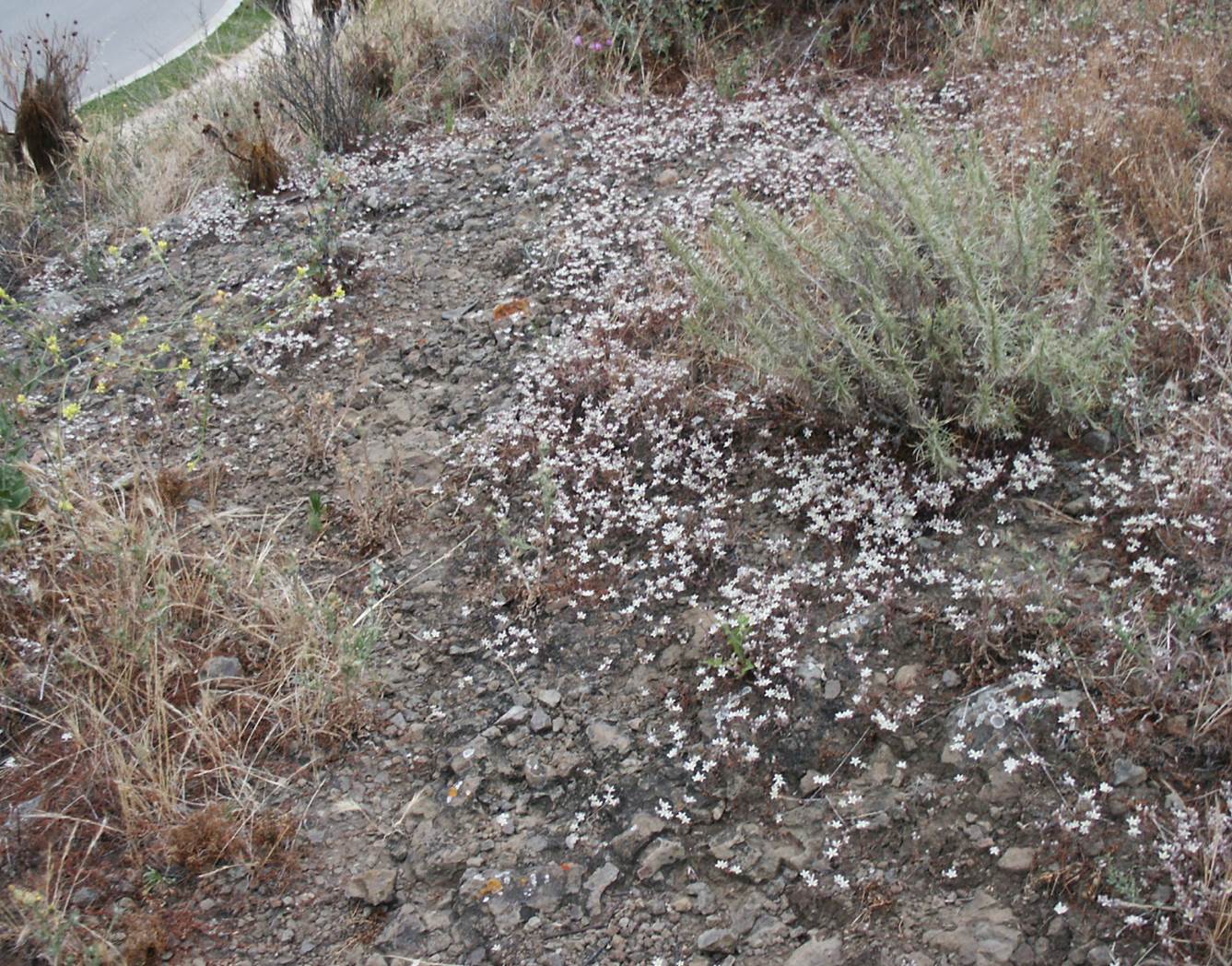
Dudleya blochmaniae on hillside to the south of University Glen, CI. Dense patches such as this are common during wetter years, and not typical of dry years (24 May 2005).
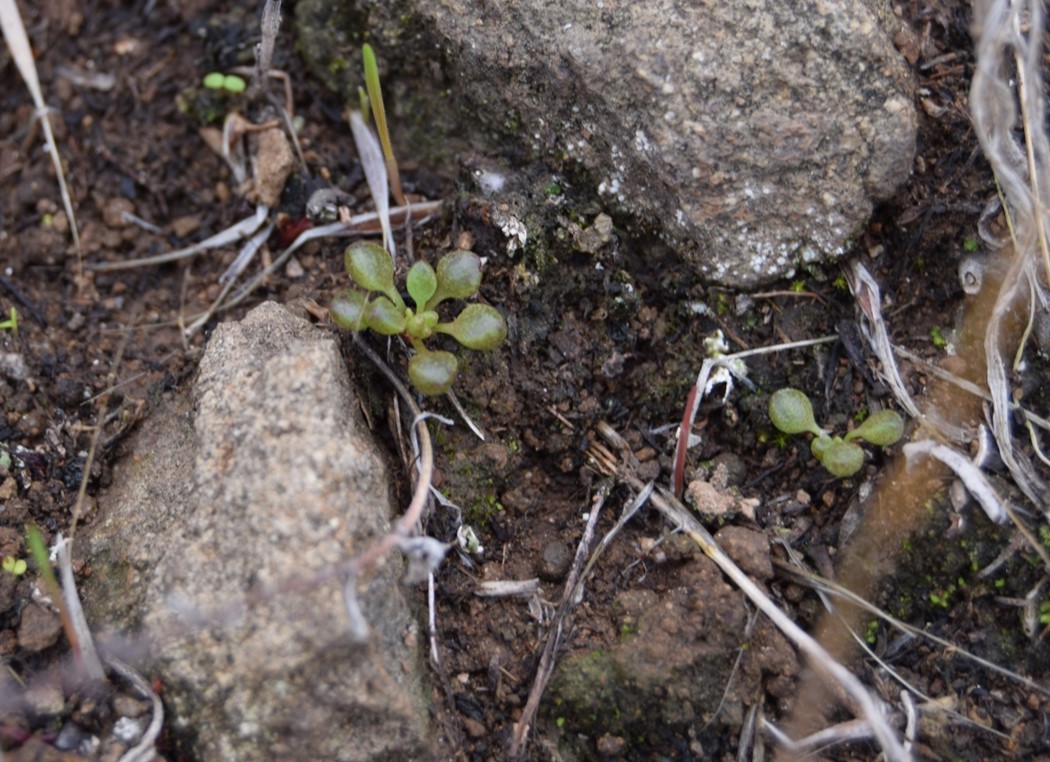
Dudleya blochmaniae tiny plants on hillside above (south) of Malibu Hall, CI campus (11 January 2016).
